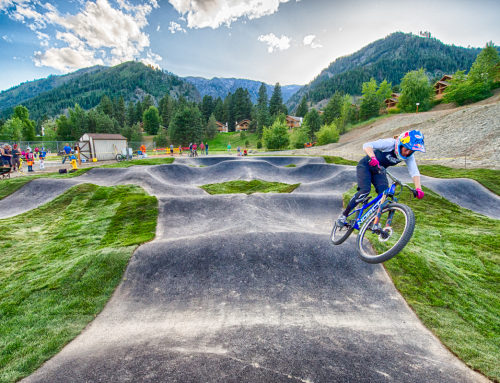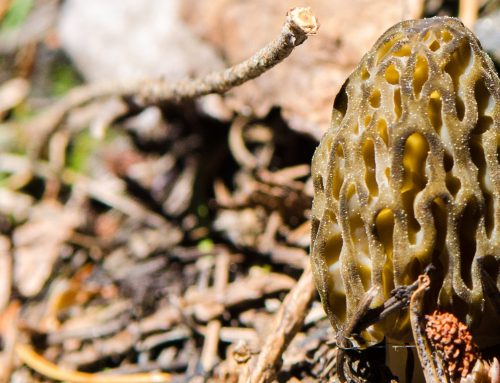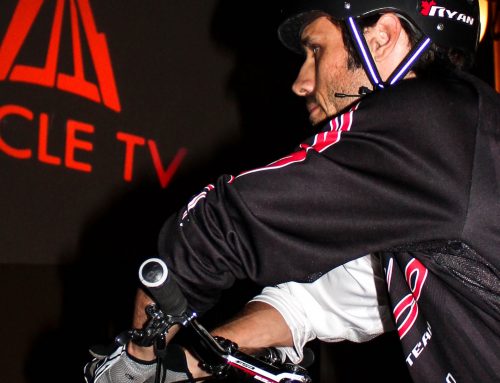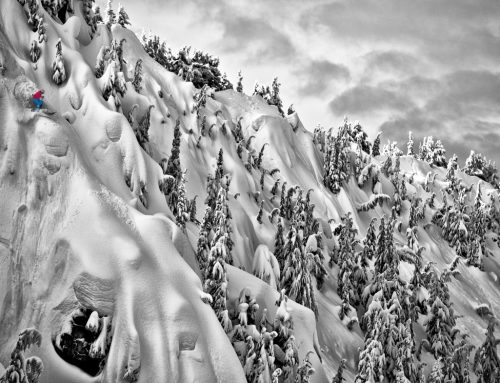 The best places to view cellestial events are far away from the light polution of cities and towns; places of calm and solitude that make us remember that there are more stars in the sky we could ever imagine. Climber and photographer Erik Turner headed into the North Cascades to the high camp at Eldorado Peak and was rewarded with stunning views resulting in a 28 second timelapse of the night sky.
The best places to view cellestial events are far away from the light polution of cities and towns; places of calm and solitude that make us remember that there are more stars in the sky we could ever imagine. Climber and photographer Erik Turner headed into the North Cascades to the high camp at Eldorado Peak and was rewarded with stunning views resulting in a 28 second timelapse of the night sky.
Summer is still going strong in the Pacific Northwest, and the skies were set to be clear for the peak of the Perseid meteor shower on August 11th. A high camp and a peak that could be framed with a northeasterly view were sought – our objective was eventually picked out as Eldorado Peak in the North Cascades.
We hiked up the steep trail and boulder field approach and setup camp high on the Eldorado glacier. Hazy skies off to the south and west from forest fires had me concerned, but luck allowed clear views towards Eldorado and the stars beyond. As the last bits of light faded away I was impressed at how complete the darkness was – even at f/2.8 and 30”, I was forced to shoot at ISO3200, not the preferred choice for my 60D. But I chose a bit of noise over star trails and set the timer to take an image every 35”. I stayed up as long as I could before swapping out batteries and retiring to the subtle noise of shutter actuations.
The climb of Eldorado the next morning went smoothly and we made the harrowing ascent up the knife-edge ridge, which was made slightly less harrowing since we followed up a skiier who skinned half of the summit ridge – craziness! We consumed food at the Marblemount staple Good Food before loading up on caffeine and making the drive back to Seattle. A quick view of the timelapse images at home brought forth a pleasant surprise: aurora! I’ve never seen the light show of charged particles in person, and given how faint the aurora is in the video, it likely wouldn’t have been visible to the naked eye, so I might just take this as my first sighting! To read about past adventures, or follow future ones, check out High pressure adventures.
Technical details: for the curious, the timelapse was shot for roughly 5.5 hours and compiled at 24fps – I’ve found this to be sufficiently smooth for star trail timelapses. Each image is a 30 second exposure, spaced 35 seconds apart (5 second delay to ensure camera buffer stays empty). There are a number of airplanes, satellites and non-meteors captured, unfortunately. There is at least one geostationary satellite (look carefully-it doesn’t move!) and one meteor explosion (0:20).
The climb of Eldorado the next morning went smoothly and we made the harrowing ascent up the knife-edge ridge, which was made slightly less harrowing since we followed up a skiier who skinned half of the summit ridge – craziness! We consumed food at the Marblemount staple Good Food before loading up on caffeine and making the drive back to Seattle. A quick view of the timelapse images at home brought forth a pleasant surprise: aurora! I’ve never seen the light show of charged particles in person, and given how faint the aurora is in the video, it likely wouldn’t have been visible to the naked eye, so I might just take this as my first sighting! To read about past adventures, or follow future ones, check out High pressure adventures.
Technical details: for the curious, the timelapse was shot for roughly 5.5 hours and compiled at 24fps – I’ve found this to be sufficiently smooth for star trail timelapses. Each image is a 30 second exposure, spaced 35 seconds apart (5 second delay to ensure camera buffer stays empty). There are a number of airplanes, satellites and non-meteors captured, unfortunately. There is at least one geostationary satellite (look carefully-it doesn’t move!) and one meteor explosion (0:20).




